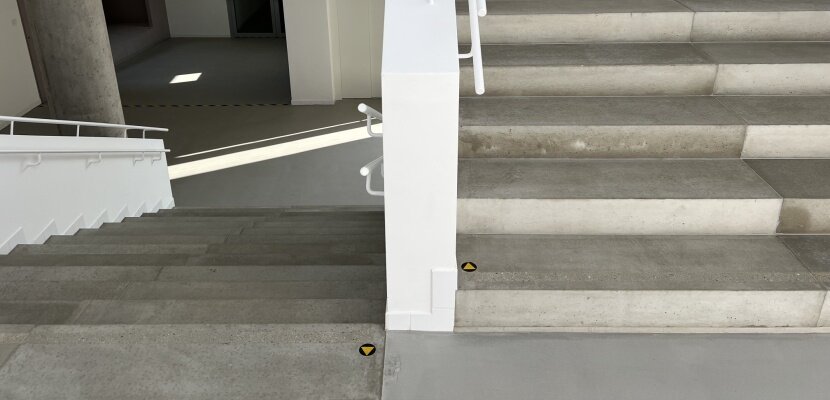Surface Textures and Color Tone
You can find all our surfaces in the updated company surface catalog.
It is interesting to note that depending on the chosen surface texture, starting from the same, identical block, we can obtain different color shades, often significantly different. Each color shade can be enhanced and/or changed by using coloring pigments.
After removing the precast from the mold, it goes into the finishing phase. The customer can choose from the following options:
- What is the surface of the form, what is the surface of the concrete?
- gently washed surface
- sanded and gently washed surface
- washed surface
- stocked surface
- sanded surface
- ground and then polished surface
In terms of appearance, all of our products can be classified as precast concrete products.
We speak of exposed concrete when, at the planning stage, requirements for the appearance of concrete surfaces are defined, which will later remain permanently visible after their installation.
The exposed concrete surfaces of precast concrete elements are concrete surfaces with special requirements for appearance and aesthetics. In general, a distinction must be made between:
- exposed concrete surfaces that were in contact with the formwork without subsequent processing
- exposed concrete surfaces that were in contact with the formwork with subsequent processing
- exposed concrete surfaces that were not in contact with the formwork (open horizontal areas where concrete was poured into the form) with finalization.
Please note that there are optical differences between the surfaces that were in contact with the formwork and the open, unformed surfaces.
The production of precast concrete surfaces always represents an additional effort compared to conventional concrete surfaces. In practice, however, not every exposed concrete surface has to meet the highest standards. Increasing requirements usually also involve increased effort, which affects pricing. Therefore, the planning process should determine what level of requirements the exposed concrete surfaces should meet.
What You Should Know
Each handmade concrete element is unique also because concrete is essentially a natural material. Even with the greatest care, it is not possible to prevent occasional hairline cracks, concave or convex surfaces during hand production. Differences in color, structure, texture and the formation of lighter clouds are characteristic of concrete. Differences in surface appearance that do not affect the usability of the product are permitted.
It is advisable to agree and approve the surface structure and color shade of the product's front surfaces in advance. For this purpose, we will produce and deliver a sample of the agreed size (recommended dimensions: 150x150x30 mm) for approval.
When evaluating exposed concrete surfaces (especially surfaces of the same form, such a surface), the overall impression when observed from a distance of at least 2 m is decisive. The deviations that can be tolerated in the appearance of an exposed concrete surface are:
- inflorescences
- formation of stains, marbling and slight deviations in color shade
- clusters of pores
- air pores and cavities with a diameter of less than 16 mm
- describing spacers
- slight differences in color shade at the points of contact of individual parts of the mold
- effects from cement laitance separation to a small extent
- Edge fragments on versions with sharp edges
- slight concave and convex curvatures
We recommend that the customer physically familiarize themselves with our products in advance. Comparing already approved samples with products delivered to the construction site is often a source of misunderstandings. Even though it is an additional cost, it is worth making a prototype or fragment of the product in advance in a 1:1 scale from the same materials and the same technology as the design product.
Other Surfaces
It is also possible to order other color shades and surface structures according to the requirements of the architect or customer, or according to the data specified in the submitted documentation.
Impregnation and Graffiti Protection
These are protective coatings that we recommend using before shipping the products. They come in different types, but they have one thing in common: they are vapor-permeable, meaning they allow the concrete to “breathe”. They repel water, limit efflorescence, increase resistance to freeze/thaw cycles and the effects of de-icing salts, and prevent stains from food contact and spilled oils from forming on the surface. Some also provide protection against graffiti. They are transparent. Once applied and dried, they can be invisible, create a subtle sheen or high gloss, or enhance the color of the concrete.

